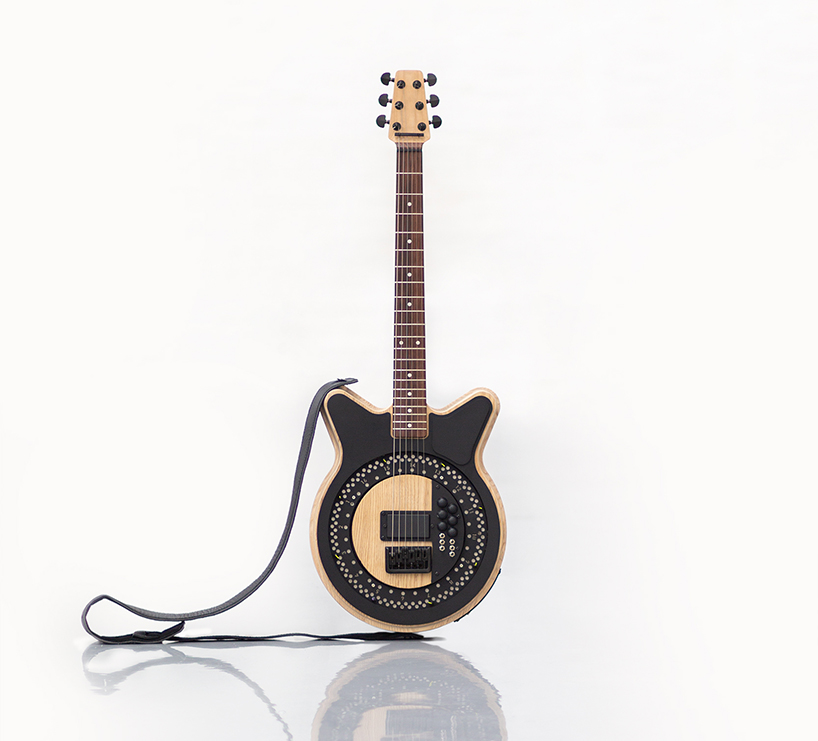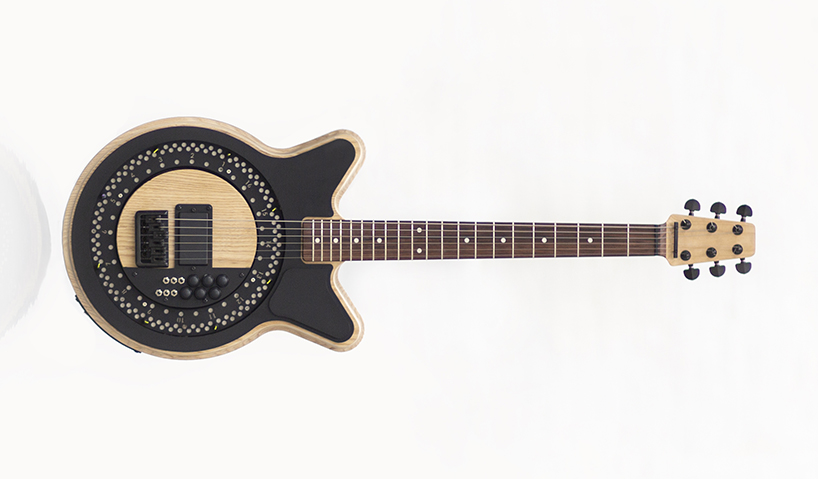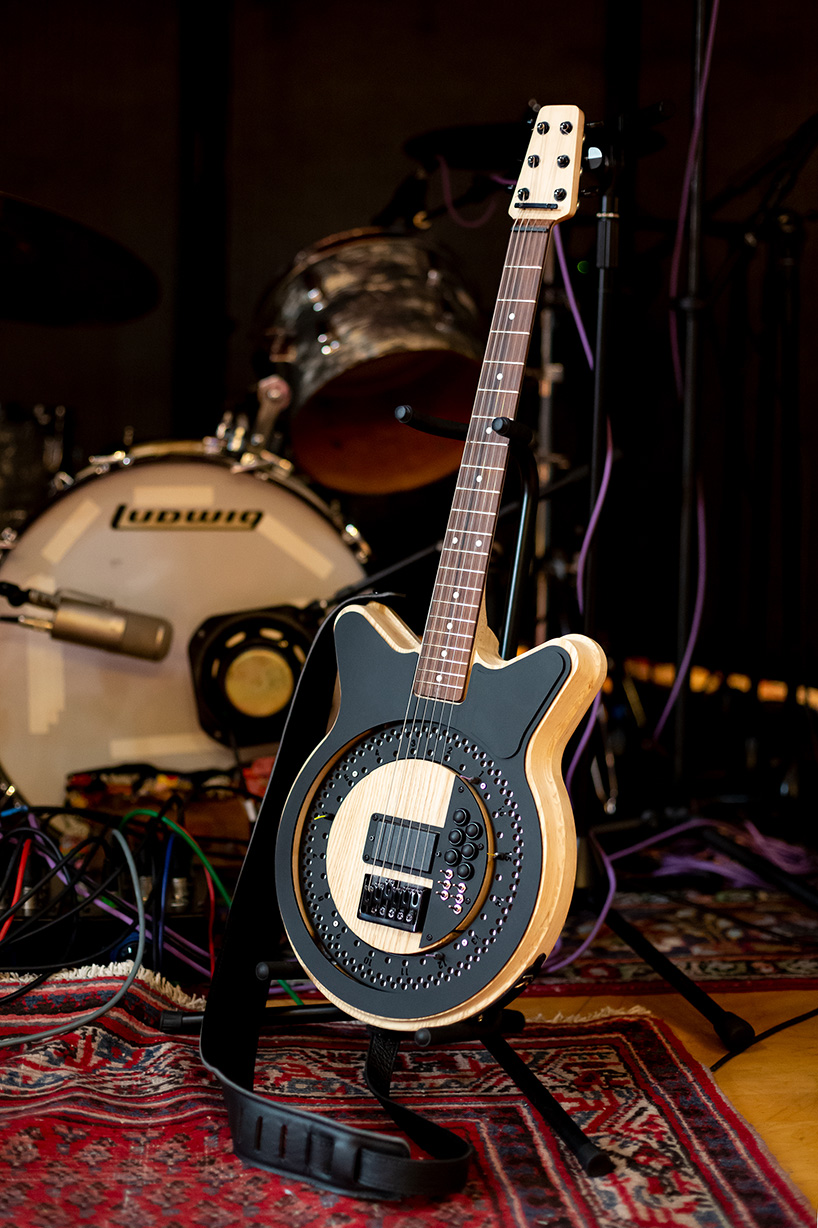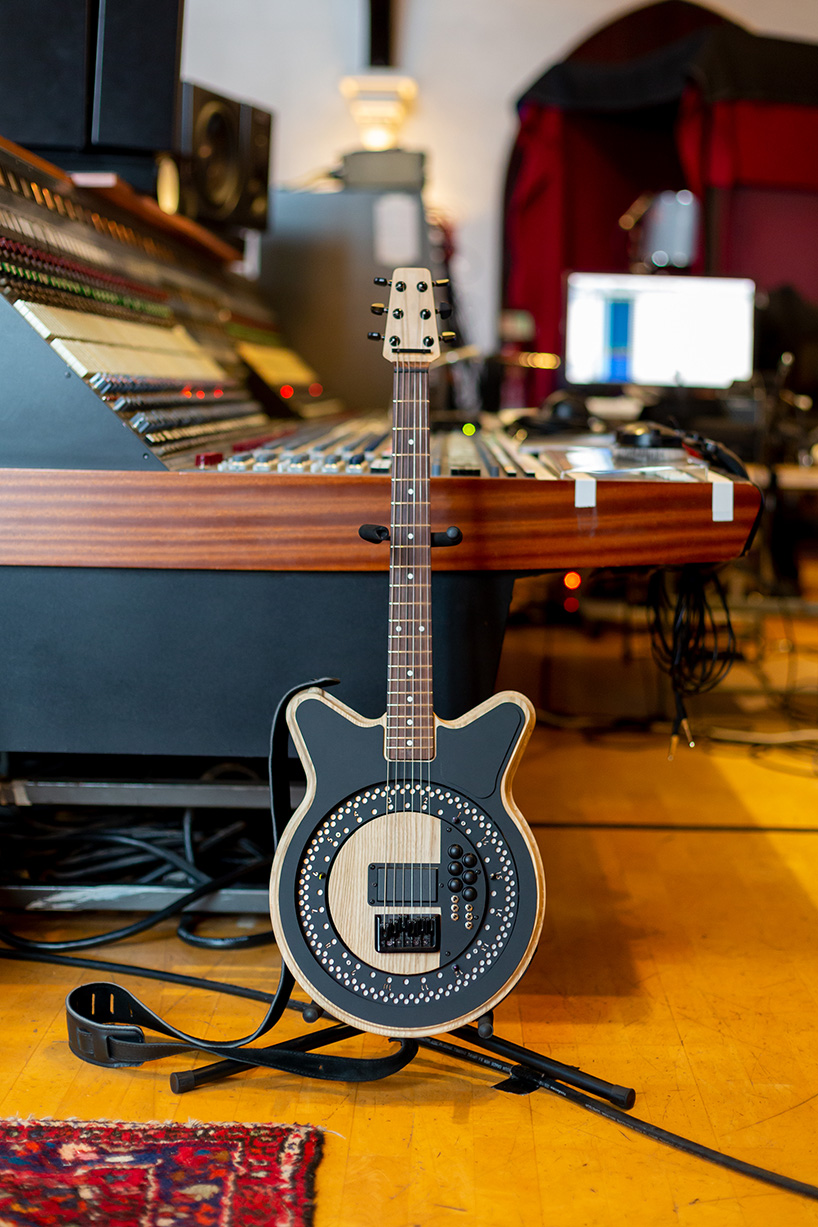self-playing electric 'circle guitar' can pick at up to 250 bpm – Designboom
by June 23, 2024london-based product designer anthony dickens has unveiled an innovative musical instrument concept called ‘circle guitar’. the radical design is essentially a self-playing electric guitar that uses a built-in mechanical step sequencer disc, rotating underneath the strings. the project has already caught the attention of many musicians -including radiohead guitarist, ed o’brien and grammy-winning writer and producer paul epworth – gaining growing popularity. 
all images courtesy of anthony dickens
anthony dickens has built the circle guitar with the help of a team of brilliant engineers to generate sounds, textures, and rhythms that would be impossible with a conventional electric guitar. what differentiates the new design from other electrics, is the motor-driven spinning disc in its body that rotates at up to 250 bpm under the strings. this innovative feature makes it possible to exceed what the musician’s hand can achieve alone.
the built-in spinning disc has 128 holes where picks are placed in, and these strike the strings instead of a player’s pick hand. the guitarist can program the circle using five color-coded plectrums to set the picks’ force when striking the strings. these variations alone create unlimited options for a new kind of acoustically created dynamic and rhythmic sound.
the signal is captured via a hexaphonic pickup, and each string has its own output that can be amplified, recorded, and processed individually. there are six switches on the guitar’s body that control whether the signal passes freely to your amp, to your mixing desk or computer interface, or to a button that releases the signal only when pressed. this enables musicians to play the circle guitar a bit like a piano, creating interesting rhythmic chords or lead lines.
the ability to mute the strings with your fingers creates the widest and most expressive tonal variation by acting like a low-pass synth filter to remove the higher frequencies and accentuate the rhythmic hits. when playing this guitar, the smallest finger movement can create big tonal changes. the unique design integrates high-functioning motor-driven elements along with the sensitive human touch, pushing guitar playing into ‘new, unexplored territories’.
anthony dickens’ circle guitar is currently a working prototype, after two years of development. it was built in the vaults and workshops of makerversity in somerset house, london – home to some of the uk’s best independent engineers, designers, artists and musicians. the instrument consists of an ash body, rosewood fretboard, and laser cut matte black acrylic tho cover the electronics, with all mechanical parts housed within a single 3D-printed unit. dickens is aiming to get the guitar in production by spring 2021.


project info:
name: circle guitar
designer: anthony dickens
designboom has received this project from our ‘DIY submissions‘ feature, where we welcome our readers to submit their own work for publication. see more project submissions from our readers here.
edited by: myrto katsikopoulou | designboom
happening now! croatian furniture company prostoria stands as an example of a different and more traditional approach based on the evolution from the local factuality of all actors involved in the production process. explore prostoria on designboom!
a diverse digital database that acts as a valuable guide in gaining insight and information about a product directly from the manufacturer, and serves as a rich reference point in developing a project or scheme.


Leave a comment